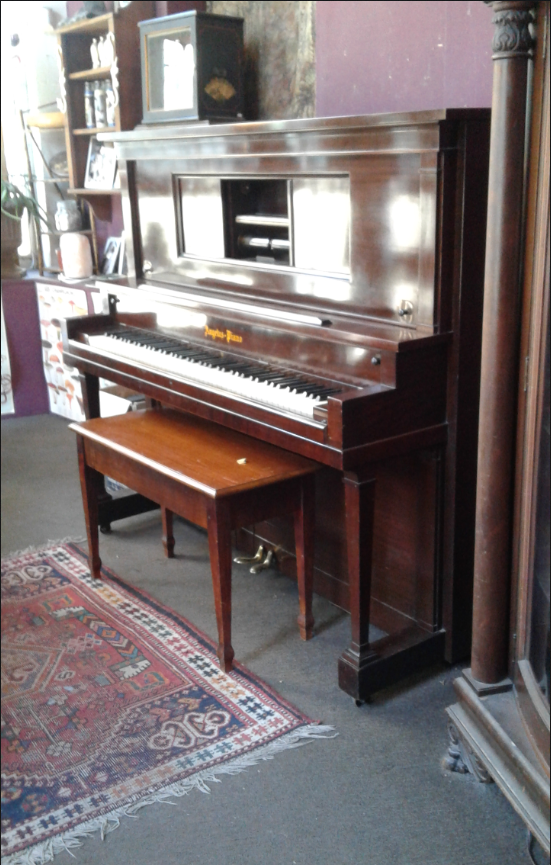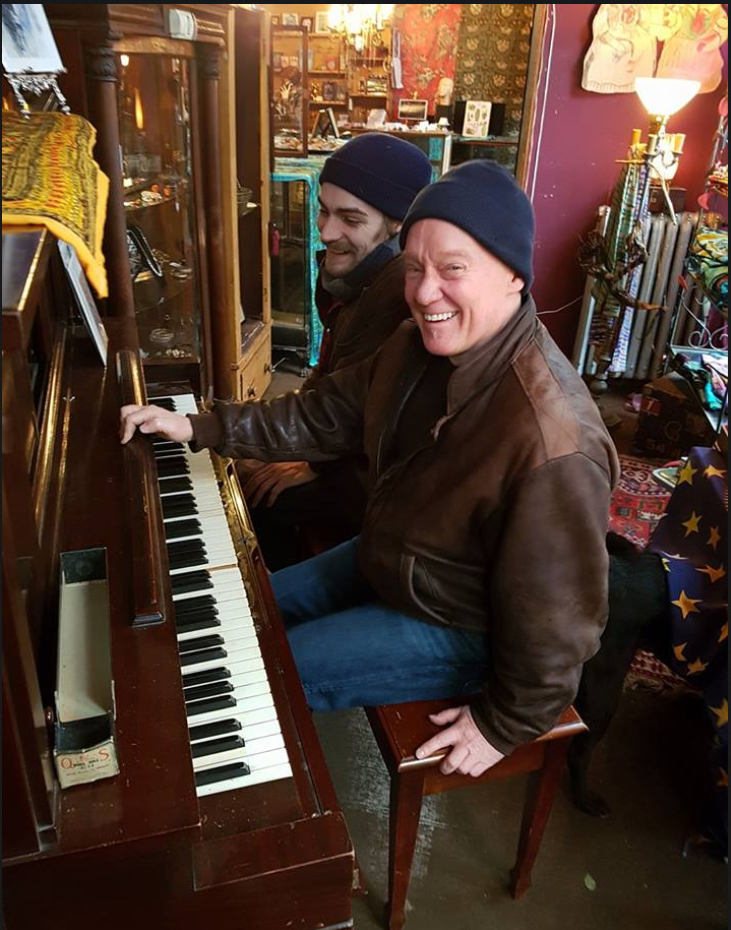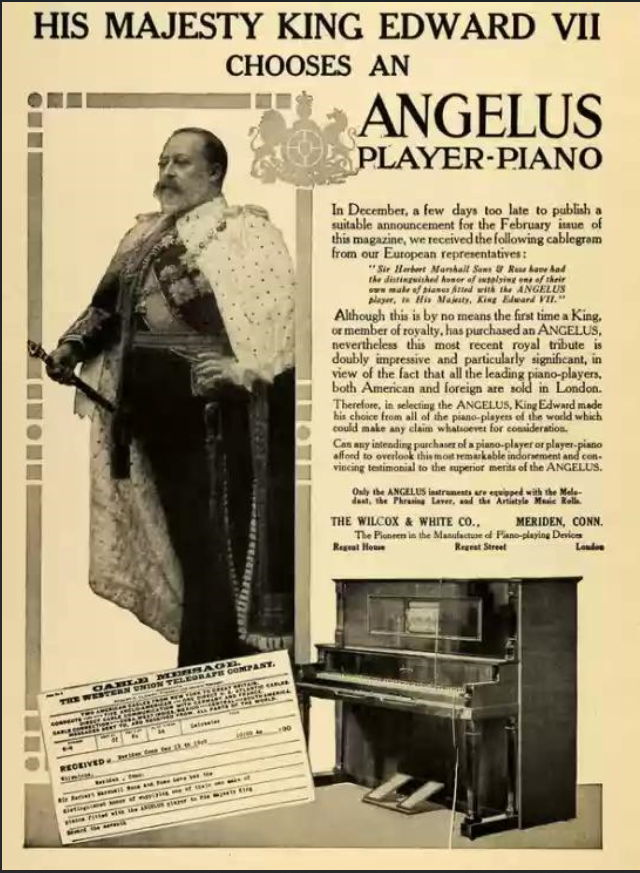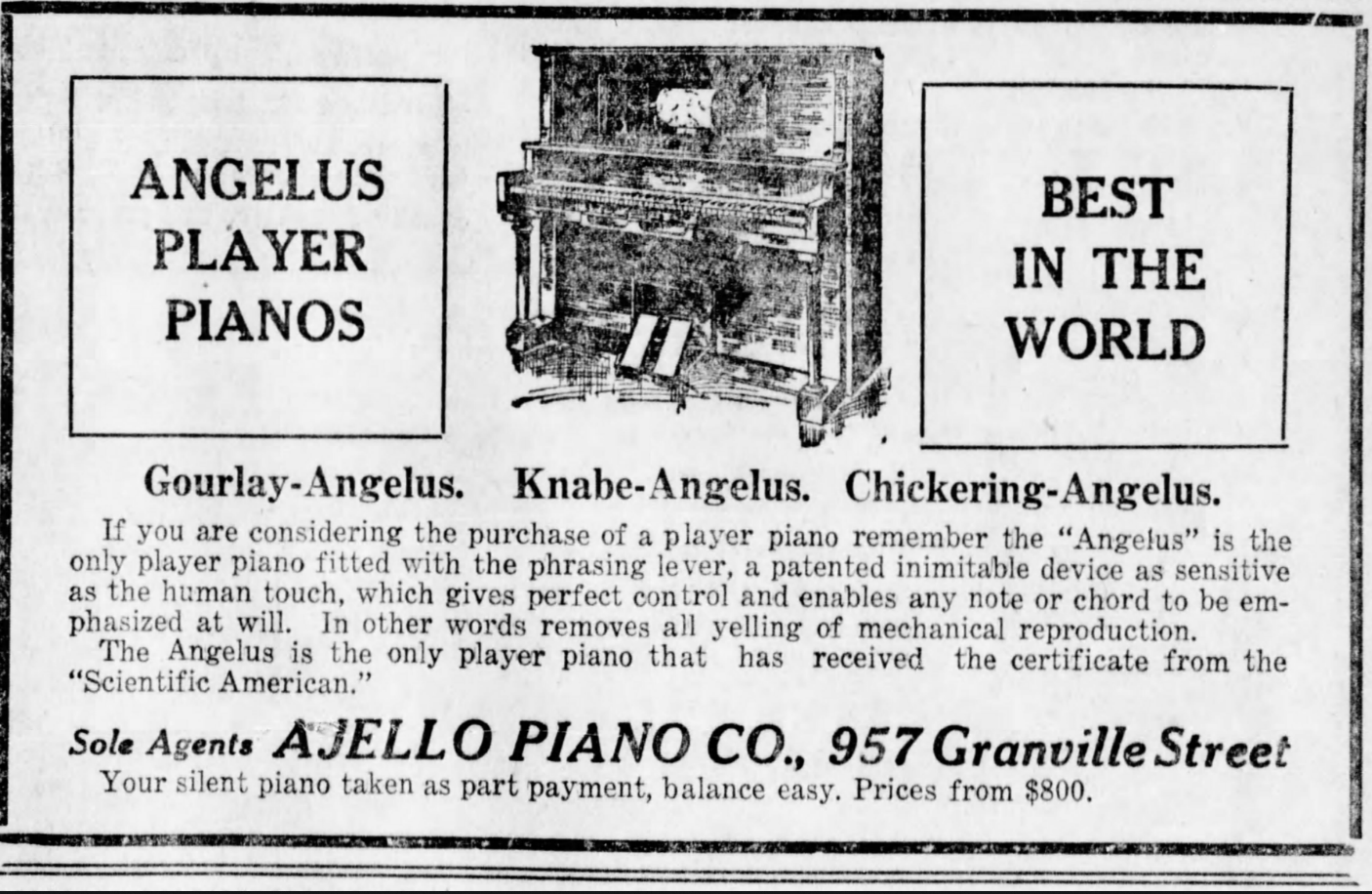By Michael Kluckner
Michael Kluckner is a writer and artist with a list of books that includes Vanishing Vancouver and Toshiko. His most recent book is a graphic novel called 2050: A Post-Apocalyptic Murder Mystery. He is the president of the Vancouver Historical Society and a member of the city’s Heritage Commission.
We inherited a player piano when we bought our house in 2010. It’s a long story, but in the back of my mind I thought I might want to play it. As it turned out I didn’t, but try to find a new home for an old piano nowadays!

Our hundred-year-old Grandview house also contained a postwar classic—a panelled “rec room” in the basement where the piano lived. They were so popular that Canadian Forest Products’ New Westminster plywood division published a plan book in 1961, offering homeowners six themes to choose from—Contemporary, Western, Polynesian, Tavern, (Artist’s) Salon, and Marine. This was an era of casual entertaining at home, dancing to LPs on the hi-fi or watching TV and drinking. Three of the six plans include a bar.

Our player piano came with dozens of music rolls—popular arrangements of classics and some show tunes like The Sound of Music. As most readers will know, the piano “plays itself,” powered by a “pianist” who pumped on foot pedals, causing the perforated roll to pass over a drum and triggering an ingenious multitude of cogs and arms that made the hammers hit the strings in the correct order.

Salmagundi. Photo Diane Farnsworth, December 2017.
Player pianos are classic Victoriana, a great example of that era’s fascination with complex gizmos like steam engines. A skilled pianist could actually play accompaniment to the piano-roll tune; more likely, most people pedalled away, watched the keys go up and down, and sang along. It probably made its way to our house in the ’50s.
After years of trying, we had all but given up finding the piano a new home, but then Tom Carter joined the board of the Vancouver Historical Society. Tom is a musician and artist with a keen interest in entertainment history. He came over and saw it, got it playing, hired a rebuilder to fix it up, and said he would love to have it—the only problem being that he already has a grand piano in his home.

No problem, he said, he’d find it a home.
Along the way, Tom researched its history. It’s an Angelus, probably from 1915–20. New, it was worth about $950, or double the price of a Model T Ford and about equivalent to the annual income of a skilled tradesman.
Watch and listen here: tomhighres
Player pianos were the home-entertainment centre of the day, a kind of transition between the skilled pianist (usually a woman) of 19th-century family gatherings to the hi-fi and, in this era, the TV that has now become the home theatre.

At the time of writing, the player piano was living at Salmagundi on West Cordova in Gastown. But last month, after 45 years in business, proprietor Anne Banner had the lease terminated and will be vacating the premises at the end of this month. The piano will be going to another temporary home in White Rock where it will be restored and rebuilt. EL

